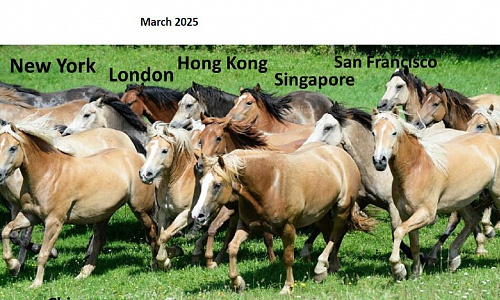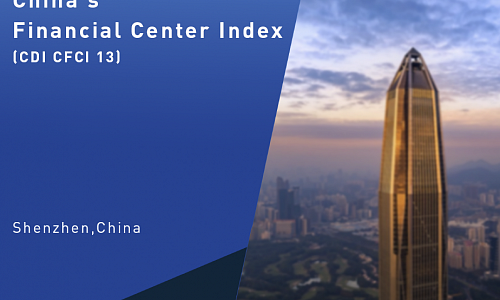
2024 - Insights

Date: August 27, 2024
Author: Mr. MING Liang, Research Fellow, Institute of Urbanization, CDI
In 2024, the Chinese AAA game Black Myth: Wukong debuted spectacularly, swiftly becoming a trending topic and a "top influencer." Inspired by the Chinese literary classic Journey to the West, this game has indeed created a “black myth,” achieving dual success in both critical acclaim and sales. The wide-ranging discussions it has sparked primarily revolve around the following three aspects:
1.Black Myth: Wukong Sets a Benchmark for High-Quality AAA Games in China
Domestic developers rarely ventured into AAA game territory owing to high costs, lengthy development cycles, and competitive threats. The launch of Black Myth: Wukong has altered this landscape. The game has gained widespread acclaim from players both domestically and internationally due to its top-notch character design, narrative structure, special effects, scene rendering, and voice acting. It has not only dominated sales charts in many countries and regions but has also become the first Chinese game to break into Steam’s top ten concurrent player rankings, ushering in a new era for China's gaming industry in the international arena.
2.Black Myth: Wukong’s Creative Team Embodies Both Idealism and Pragmatism
This monumental game was not created by a major corporation but rather the culmination of six years of dedicated effort by a small-to-medium tech company. The team balanced their aspiration to develop high-quality single-player games with the need for financial stability, which was provided by revenue from mobile game ventures. They achieved collaborative synergy by forming project teams in both the Guangdong-Hongkong-Macao Greater Bay Area and the Yangtze River Delta, bringing “Wukong’s black myth” to life.
3.Black Myth: Wukong Offers Fresh Perspectives on the Next Wave of “Cultural Export”
Video games are not just cultural carriers but also powerful channels for dissemination. The creators of Black Myth: Wukong seamlessly blended the “81 tribulations” from Journey to the West into the gameplay while digitally reconstructing 31 iconic landmarks from 12 provinces and cities across China with meticulous 1:1 accuracy. These endeavors vividly showcase the charm of traditional Chinese landscapes and the elegance of Oriental aesthetics, offering international players a rich and immersive experience of Chinese culture that transcends the story.
Beyond its Achievements: Reflections and Lessons
1.International Competition in Gaming is a Grueling Long Game
Similar to Wukong’s journey through the “81 tribulations,” the gaming industry demands constant innovation and refinement to maintain player engagement and loyalty. The game has achieved a remarkable debut, but the road ahead is challenging. Competing with global frontrunners requires extraordinary creativity, substantial investment, and continuous product optimization with operational excellence. While the game’s creators have received significant acclaim, they have also acknowledged criticisms, indicating areas for improvement. The considerable scrutiny and lofty expectations associated with the game serve as a “Sword of Damocles” over the team, signifying that this is only the “first level” of their journey. Many more “demons and monsters” lie in wait, making the journey ahead as arduous as it is promising.
2.Games, as a Vital Component of “Cultural Export,” Must Work in Tandem with Other Channels
As a blend of technology and creativity, Black Myth: Wukong offers a visually and audibly compelling introduction to Chinese culture. However, it still falls short of promoting regular and effective cross-cultural interactions. From the perspective of international communication practices, “cultural export” is a long-term, systematic endeavor that necessitates leveraging various cultural carriers and channels to establish a massive, effective matrix. Among these, the popularity of learning Chinese as a second language serves as a key indicator. As global interest in Chinese cultural symbols grows, the emergence of Chinese language education as a trend will be crucial in this new wave of “cultural export.” Nevertheless, “cultural export” has already set sail; the journey westward is poised to reach its destination.
3.Social Attributes of Games Call for a Balance of Multiple Factors
As a form of entertainment that encourages emotional and psychological engagement, video games not only generate substantial economic and commercial value but are also inherently constrained by laws, policies, cultural traditions, and ethical norms of different countries. As a unique cultural industry, the gaming sector has its own strengths and shortcomings. Policymakers should refrain from both excessive suppression and short-sighted “rush tactics.” Instead, they must strike an optimal balance between economic, social, and cultural dimensions.

Date: September 13, 2024
Author: Dr. LIU Jie, Senior Research Fellow at CDI
In 2021, China transitioned to a moderately aging society, with the aging process set to accelerate, posing increasing challenges to healthcare and elderly care. The rapid aging phenomenon is marked by three key features:
- Trend: China’s aging population is poised to join the “fast lane.”
- Structure: The proportion of the very elderly population is steadily increasing.
- Features: Issues related to chronic diseases and disabled older adults are becoming more pronounced.
The China Population Aging Development Trend Forecast Report indicates that China will reach critical milestones in the acceleration of aging between 2035 and 2050, with the older adult population projected to peak in 2053. From 2021 to 2035, the older adult population is expected to increase from 300 million to 400 million, representing an accelerated growth rate. Simultaneously, the proportion of extremely old individuals (aged 80 and above) will continue to climb, accompanied by a sharp increase in the number of individuals with chronic conditions and disabilities.
Establishing a suitable integrated healthcare and elderly care service system has emerged as an urgent priority.
Insufficient Supply: Several integrated care models are still in their nascent stages. Nationwide, only 7,800 qualified institutions provide a total of 2 million beds, significantly insufficient to meet the massive demand. Rehabilitation hospitals and elderly care facilities often possess insufficient medical capabilities, and the medical support for home-based and community care is also inadequate.
Healthcare Payment Gaps: Existing medical payment systems fail to effectively support long-term hospitalization and rehabilitation for older adults, resulting in frequent transfers between facilities or significant out-of-pocket expenses.
Family Care Burden: The caregiving burden for families of disabled and cognitively impaired older adults is increasing annually. With the increase in the aging population and the decline in birth rates, many families struggle with the exorbitant costs of professional care.
Limited Long-Term Care Insurance Coverage: Although the number of pilot cities for long-term care insurance has expanded to 49, only approximately 1.34 million individuals get coverage, falling far short of the demand for disability care.
Addressing these challenges necessitates the development of a robust integrated healthcare and elderly care system.
1.Expand Integrated Healthcare and Elderly Care Services
To address the dual needs of healthcare and elderly care, resources must be coordinated to provide services tailored to demand, encompassing disease treatment, chronic disease management, postoperative rehabilitation, and long-term care. This entails:
Encouraging underutilized hospitals and medical institutions to transition into integrated care providers.
Implementing healthcare reimbursement policies in eligible elderly care facilities and promoting the development of medical services within these institutions.
Enhancing home-based and community care by augmenting the medical capabilities of community health centers, expanding the availability of family beds, and gradually strengthening the capacity of primary healthcare institutions to deliver in-home services for older adults.
2.Transition Secondary and Lower-Tier Hospitals to Integrated Care Facilities
Only 10% of hospitals in China are tertiary-level facilities, while secondary and lower-tier hospitals often struggle with operational difficulties and fail to meet the treatment, rehabilitation, and care needs of an aging society. Transforming these hospitals into integrated healthcare and elderly care facilities is essential. A referral mechanism should be implemented, enabling treatment-oriented hospitals to transition patients to rehabilitation hospitals, integrated care facilities, or elderly care institutions as part of a tiered medical system.
3.Achieve Universal Coverage of Long-Term Care Insurance
The coverage of social security-based long-term care insurance must be expanded, together with improvements in funding mechanisms and benefit guarantees, to ensure a government safety net. Additionally, commercial insurance companies should be encouraged to participate in pilot programs by offering personalized long-term care insurance products with tax incentives for buyers. By integrating insurance with care services, commercial insurers can help enhance the development of the care service system.
4.Expand Hospice Care Pilot Programs
Efforts should be undertaken to increase the number of hospice care facilities and strengthen the training of relevant medical staff. A bed-day payment model combining healthcare reimbursement and personal contributions should be investigated to meet the needs of terminally ill patients.
With the acceleration of China’s aging society, the integration of healthcare and elderly care will be vital in addressing the challenges posed by population aging to safeguard the well-being of older adults.

Date: September 15, 2024
Author: Dr. CAO Zhongxiong, Assistant President of CDI, and the Director of the Digital Strategy and Economic Research Center
China's platform economy has evolved through distinct stages, transitioning from unchecked growth to a phase of well-regulated governance and innovative development. Over time, this process has cultivated a group of leading platform enterprises. The last three years have been pivotal, signifying a period of significant transformation. Initially driven by the rapid rise of the "Internet Plus" initiative, platform enterprises expanded into traditional industries, often being equated with e-commerce companies by the public. However, as digital technology increasingly integrates with the real economy, platform enterprises are now venturing into emerging fields such as technological innovation, driving their businesses to new depths.
Consider Alibaba as a prime example. In the last three years, the company has significantly increased its investment in areas such as AI-driven large language models. Its proprietary “Tongyi” model has secured a leading position in the global open-source large-model landscape. Alibaba has also facilitated the development of next-generation models by leveraging its own computational power and technical capabilities. This evolution demonstrates a shift: platform enterprises are no longer merely commercial entities but are increasingly positioning themselves as digital enterprises. As pioneers of the digital economy, platform enterprises are leveraging digital technologies to drive supply-side reform, stimulate consumption, streamline supply chains, promote dual circulation (domestic and international), and foster flexible employment, transforming themselves into comprehensive integrators of digital technology application and advancement.
Although Alibaba’s journey began in e-commerce, it has progressively evolved into a frontrunner in China’s technological innovation. Amid a global wave of advancements, the company has achieved breakthroughs in operating systems and cloud computing, integrating innovation into its operations to enhance technological independence and resilience. Consequently, platform enterprises are now not only key players in commerce but also essential engines of technological progress.
China’s platform economy has now embarked on a new stage of development, necessitating a balance between effective regulation and the promotion of growth for its advancement.
Looking Ahead: The Expanded Role of China’s Platform Economy
1.Platform Enterprises as Leaders in Technological Innovation
China’s emphasis on technology has reached unprecedented heights. For platform enterprises, innovation is not only about their own advancement but also about enabling collaborative innovation across industries and ecosystems—a critical component of their "new journey." New technologies, especially in artificial intelligence, are advancing rapidly. Platform enterprises are uniquely positioned to provide the computational power and infrastructure essential to enhancing the feasibility, scalability, and economic viability of innovation. As major tech companies, they possess resource allocation capabilities, robust R&D capacities, and deep talent reserves, allowing for sustained investment in technological innovation and effective risk management.
2.Platform Enterprises as Catalysts for Emerging Productive Forces
The platform economy, as a novel economic model, is closely aligned with the national objective of fostering new productive forces. Market regulators expect platform enterprises to leverage technological innovation to drive industrial upgrades and assume a greater role based on their transformative outcomes. These enterprises are positioned at the forefront of the market, with profound insights into market demands, industry dynamics, and technological applications. They can overcome traditional constraints of time and space by aggregating, circulating, and sharing innovation resources online, promoting technological advancements across upstream and downstream industries. By empowering ecosystem partners, platform enterprises can stimulate the development of emerging industries and consistently contribute to new productive forces—which is a core responsibility and crucial in the digital economy ecosystem.
3.Platform Enterprises as Exemplars of Fair Competition
Compliance and maintenance of fair competition are crucial for sustainable development, whether achieved through the internal ecosystem or their external role as core players in the digital economy. At this new starting point, platform enterprises must continually strengthen their awareness of fair competition and improve their compliance capabilities. This not only facilitates their own growth but also establishes an industry benchmark. By optimizing the business environment and fostering fair competition, platform enterprises demonstrate a strong sense of social responsibility and commitment.
Navigating Challenges in a Rapidly Evolving Landscape
The accelerated advancement of digital technologies and the transformation of industries and ecosystems are propelling the global economy forward, fueled by computational power. However, technologically advanced nations often create "technology barriers" and "ecosystem barriers," hindering latecomers from catching up. As technological gaps widen, the challenges of addressing them increase exponentially.
China's platform enterprises have a solid foundation characterized by internationally competitive companies and the “scenario advantage” enabled by a unified, large-scale domestic market. Leading firms such as Alibaba have become critical infrastructure and technological platforms for national innovation. Fully developing the platform economy and harnessing the innovation capacity of platform enterprises will revitalize Chinese modernization and facilitate high-quality development.

Author: Dr. LI Enhan, Deputy Director of Token Digital Economy Research Center, CDI
Editor’s note: In the wave of global digitalization and intelligence, AI's role in artistic creation is challenging the foundations of copyright law. Questions about the originality of AI works, their copyright ownership, and the criteria for infringement are now at the forefront for legal experts. Against this backdrop, China and the United States, as major global players, are navigating the uncharted waters of AI and copyright with their distinct legal practices likely to shape international norms.
The growth of artificial intelligence (AI) requires a redefinition of traditional copyright concepts, including authorship, originality, and the attribution of rights and liabilities associated with infringement. While AI creations increase in complexity, the consensus finds that AI should not be granted authorship, as copyright is intended for human creations. However, with technological advancements and increasingly diversified creative forms, this position may encounter greater challenges and debates.
In the U.S., copyright law insists on a conservative approach and stipulates that human authorship is essential for copyright eligibility. This was evident in the case of "A Recent Entrance to Paradise," in which the court clearly stated that the prerequisite for copyright protection is "human authorship," thereby denying copyright registration for AI-generated pieces (Mathur, 2023). The U.S. demands significant human creativity in a work to deem it copyrightable, thus often excluding AI-generated works from copyright protections.
China, in contrast, demonstrates greater flexibility. When assessing AI-generated works, Chinese courts consider both the originality and the degree of human involvement and tend to judge whether works reflect human intellectual input and individuality. In the "Dreamwriter" case, the People's Court of Nanshan District in Shenzhen handed down a judgment in favor of the plaintiff Tencent. It recognized its AI-generated article on stock analysis as eligible for copyright since the article’s structure aligned with the format of the opinion piece and consisted of specific creative choices (Xiao, 2020).
These contrasting standards could lead to diverse future effects. The stringent option might limit the number of AI works eligible for copyright protection, affecting the innovation incentives of AI-related enterprises and individuals. In contrast, an open recognition approach could encourage AI creativity and foster synergy between AI technology and cultural industries. Yet, the latter may also encounter greater AI copyright dispute resolution challenges, necessitating a more nuanced framework for AI copyright recognition.
Furthermore, the conservative leaning of the U.S. may bolster traditional human creative processes and underscore humans' central role in art and culture. Meanwhile, China's flexible recognition could stimulate new forms of artistic and cultural expression. As AI creations may soon become integral to Chinese culture and art, China must prepare its cultural and art industries for the digital impact, addressing concerns such as the diminishing motivation among traditional artists and competitive pressures from AI-generated content in the market.
AI technology is now pushing copyright law into a new era. The contrasting perspectives and practices of China and the United States related to AI copyright reflect different interpretations of human creativity and hint at the future of global copyright law. The challenge for future lawmakers and practitioners will be in reconciling the enduring principles of copyright with the pace of technological innovation.
Reference:
Mathur, A. (2023, Dec 11). Case Review: Thaler v. Perlmutter (2023). Retrieved from Center for Art Law: https://itsartlaw.org/2023/12/11/case-summary-and-review-thaler-v-perlmutter/#post-61801-footnote-ref-0
Xiao, B. (2020, Mar 19). Shenzhen concludes first AI-generated article dispute case [深圳审结首例人工智能生成文章作品纠纷案]. Retrieved from People's Court Daily: http://oldrmfyb.183read.cc/paper/html/2020-03/19/content_166241.htm

Author: Fan Gang, President of CDI and Cao Zhongxiong, Assistant President of CDI.
As a special economic zone and a city blossoming on science and technology, Shenzhen, in South China’s Guangdong Province, is not only an economic front-runner, but also a great “mirror” illustrating China’s quick pace of technology innovation and economic development.
The development of Shenzhen has been subject to questioning on many occasions in the past decades, but the city has always responded by ironing out the doubts through its rapid development in both headwinds and tailwinds.
Shenzhen represents new quality productive forces, new systems, as well as birth of new and creative policies. It is the best window to observe the transformation of China’s economic development. A more in-depth examination of Shenzhen’s economic growth can offer proof of the stable and high-quality development of China.
Shenzhen’s rapid rise demonstrates the strength of China’s ability to achieve quality breakthroughs in its economic development, reinforcing public confidence in the country’s economic creativity and capability.
Despite the challenges posed by the lackluster global economy and an increasingly complex and uncertain world environment, China’s economy managed to achieve 5.2 percent growth in 2023. During the same period, Shenzhen’s local GDP reached 3.46 trillion yuan ($480 billion), representing a 6 percent year-on-year increase, ranking first among the first-tier cities in China, outpacing the growth of Beijing, Shanghai and Guangzhou.
In 2023, Shenzhen’s strong retail sector has become a major new driving force for economic growth. Total retail sales of consumer goods reached 1.05 trillion yuan last year, an increase of 7.8 percent over 2022, officially entering the club of Chinese cities with one-trillion-yuan consumption.
From the perspective of industrial structure, Shenzhen regards the development of strategic emerging industries and the cultivation of future industries as important levers to accelerate the formation of new quality productive forces, and coordinates the construction of industrial clusters with advanced manufacturing as its backbone.
By 2023, the strategic emerging industries in Shenzhen have achieved an added value of 1.45 trillion yuan, accounting for 41.9 percent of the city’s GDP, with a year-on-year growth of 8.8 percent. In terms of the emerging industries, Shenzhen dares to make forward-looking layouts in cutting-edge technology innovation.
New technologies are broadly utilized in Shenzhen, helping form new industries in China. Shenzhen-headquartered company BGI Genomics has been leading in the global genetic technology field. Tencent, a Fortune Global 500 company, has played a significant role in promoting the development of China’s digital economy. DJI has gone from Shenzhen to the global market, promoting the development and growth of China’s drone industry.
The sustained economic growth of Shenzhen highlights the significant potential of China’s economy, reflecting the promising prospects for continued growth and ongoing improvement in China’s future development.
Innovation is the primary driving force behind Shenzhen’s rise, serving as the lifeblood of the city. Innovation is a defining characteristic of Shenzhen, playing a vital role in its development. Similarly, innovation is essential for the progress of China’s overall economy. More emphasis should be put on technological innovation on the national level, fostering new quality productive forces.
Eyeing high-quality development, Shenzhen is making great efforts to construct an industrial technology innovation center, playing the role of the leading incubator for Chinese technological advancement, and serving China’s future development.
Now, China has a number of emerging technology-heavy cities with development advantages such as Dongguan in South China’s Guangdong Province, Suzhou in East China’s Jiangsu Province, and Qingdao in East China’s Shandong Province. These cities are actively supporting technological innovation, the growth of private sector, and the cultivation of new quality productive forces, which will further stimulate the vitality and momentum of China’s development.
China’s economy is experiencing a period of steady recovery and a structural adjustment, with sufficient potential for endogenous dynamism and a large room for continued growth. As long as China focuses on solving all the problems in the course of its development, adheres to openness and high-value innovation, and continuously develops new quality productive forces, there is no reason why the Chinese economy will “peak” any time soon.

Author: Cao Zhongxiong, Assistant President of CDI.
Despite the challenges posed by the lackluster global economy and an increasingly complex, severe, and uncertain external environment, China’s economy managed to achieve 5.2 percent growth in 2023. This growth contributed over 30 percent to global economic growth, solidifying China’s role as a crucial engine for global economic expansion. China’s economy, which is pushing over risks and challenges, has maintained steady growth in terms of quantity and scale.
In the face of multiple challenges, China successfully exceeded its annual growth target of around 5 percent set by the Government Work Report for 2023, further enhancing its status as one of the world’s top economies. In comparison with other major economies, China’s growth outpaced the 2.5 percent of the US, the 0.5 percent of the EU, and the 1.9 percent of Japan.
Economic development should not only be assessed based on quantity, but also on the quality of structural improvements. China’s high-tech industries are at the forefront of driving economic growth. In 2023, investment in technological transformation of manufacturing increased by 3.8 percent compared with the previous year, leading to a rise in the proportion of high-tech manufacturing to 15.7 percent and equipment manufacturing to 33.6 percent in the value-added industrial output.
China has maintained the fastest growth in the world ten or twenty years ago. The world has been accustomed to China’s fast growth, thinking that only fast growth is natural for China. However, it should be recognized that the Chinese economy has long surpassed the threshold of 100 trillion yuan, which is the sum of Germany, Japan, India, the UK, and Italy. Entering a new stage of high-level and high-quality development, for the 100 trillion yuan-level Chinese economy, simply observing growth rate is one-sided and biased.
Currently, the giant ship of China’s economy needs to cruise at a steady pace. Its growth rate, whether too fast or too slow, is not conducive to high-quality economic development. Issues such as insufficient consumption momentum, debt risks in the real estate sector, and hidden debts at the local level still exist.
Overall, the favorable conditions for China’s development are stronger than the unfavorable factors. The basic trend of economic recovery and improvement will not change over the long term, combined with the confidence and determination for China’s development which will remain into the future. In the current transition from old to new driving forces, stability is particularly important.
Although the current global situation is constantly changing and factors that are not conducive to globalization and economic growth are increasing, China still insists on new levels of development. This has always been China’s commitment to the world’s development.
China is actively exploring in the fields of technological innovation, development of private economy, and cultivation of new quality productive forces, which will stimulate the vitality and momentum of China’s development. The Chinese economy is in a period of steady recovery and key structural adjustment. With ample potential for continued growth, the economy is not “peaking” as Western media hyped.
To observe China’s economic growth and high-quality development, one needs to look at it with a developmental perspective. China is a super large single market, and urbanization is still in progress. China has a complete industrial chain and supply chain system, and has crossed the critical point of mid-term industrialization development. Looking across the world, there are hardly any other major countries that simultaneously meet these features. In this sense, for a considerable period of time in the future, China’s crucial role in the world economy will not be replaced.








